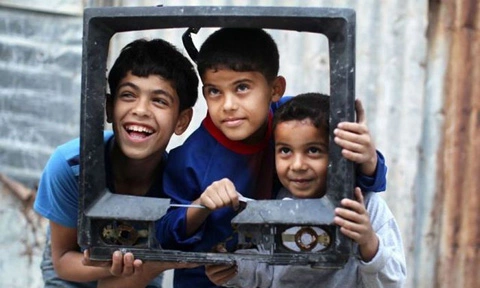The Single Shoe: A Million Dollar Moment in a Poverty-Stricken Village

The village of Kaali, nestled deep in the dry, ochre-colored dust of a region where necessities are rare luxuries, rarely saw anything new. Life here was a daily lesson in scarcity, resilience, and making do. Yet, amidst the quiet struggle, there existed a vibrant, powerful current of childhood energy that refused to be dimmed by circumstances.
One sweltering afternoon, a small group of children—led by Ramesh, the eldest at about ten, and featuring the irrepressible Mala, a girl of about six—was playing near the dusty path leading to the riverbed. They weren’t hunting for food or water; they were hunting for adventure, armed only with boundless imagination.

The Ultimate Treasure Hunt
Then, Ramesh spotted it—a flash of something bright red peeking out from beneath a pile of discarded coconut husks. He approached cautiously, his younger friends huddled behind him. With a triumphant shout, he unearthed their find: a single, bright trainer shoe, slightly worn, the laces frayed, but otherwise intact.
Their reaction was not confusion or pragmatic disappointment that it wasn’t a pair. Their reaction was pure, infectious joy.

Ramesh held the shoe aloft like a priceless trophy, turning slowly so every child could bask in the glory of the discovery. His younger friends—Mala, little Dev, and shy Priya—looked up at it with wide, happy eyes, their small faces completely unburdened by their collective lack of possessions.
The subsequent game wasn’t about wearing the shoe. It was too big for anyone, and where would the other foot go? Instead, the shoe became a spaceship’s steering wheel, a magic slipper that granted one wish (which always involved mangoes), and finally, a ceremonial scepter for the newly crowned “King of the Dust.” The excitement wasn’t about the practical object; it was about the shared moment of discovery and the collective spark of imagination it instantly ignited.

The Million-Dollar Smile
This entire moment, if captured in a photograph, would be a powerful affirmation that happiness is profoundly not dependent on material wealth. Their bright, beautiful smiles—especially the sheer, unrestrained delight on little Mala’s face as she jumps to try and touch the “trophy”—remind us of a fundamental truth we often forget.

Joy resides not in the accumulation of things, but in community, in sharing a discovery, and in finding magic in the simplest, most broken of objects.
In Kaali, a single, discarded shoe was enough to launch an afternoon of unparalleled happiness. It taught the children, and reminds us, that the richest treasures in life are the ones that can be shared freely: laughter, imagination, and the powerful bond of being truly, beautifully together.